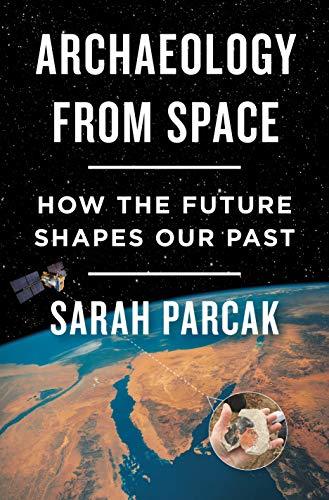What do you think?
Rate this book


283 pages, Kindle Edition
First published July 9, 2019
Herodotus called Artaxerxes III “a great warrior,” and he was certainly tenacious. He attacked Egypt again and again, first as head of the army and heir to the throne in 359 BC, and then as king of Persia, having knocked off 80 of his nearest and dearest at home to maintain control.The space analyses enabled the archeologists to locate walls of the city and artifacts likely residue from the sacking by Artaxerxes forces. And she pulls in her childhood idol Indiana Jones from Raiders of the Lost Ark:
The purpose of archaeology is, to quote Indiana Jones, “… the search for fact, not truth. If it’s truth you’re interested in, Dr. Tyree’s philosophy class is right down the hall.”She met Harrison Ford in 2016 after a TED talk in Vancouver:
"Indiana Jones inspired me to go into archeology," I told him, "and inspired so many in my field. from all of us, thank you."And when it came time for photos, she produced a brown fedora at which Ford shook his head. I was going to be an archeologist...when I was 10... (yeah, well, I was going to be a paleontologist when I was 8 and an anthropologist when I was 9... I read a lot even then) Of those three broad disciplines/fields, archeology still has an attraction. I like structures.
"You do realize that I was just a character, right? You know more lines from that movie than I do." [...] Maybe he's just a very good actor, but I genuinely do not think he understood the impact he'd had on recent generations of our field until that moment.
Something I do not understand about the television world is their yen for a big reveal with the presenter, to catch the “Oh my God!” moment of discovery. It frustrated the crap out of me. The team from the local archaeology unit had worked at Papa Stour for two days, but I was in the dark.She said upon seeing the 1,200 year old stone structure that her caution had nearly cost them the chance to see something ancient. Digs cost money. And time away from money-making jobs. And they're not the only things that cost. In a subsection appropriately titled "Knowledge Is Not as free as It Should Be"
Male or female, if you do not come from an upper-middle-class or a wealthy family, then your chances decrease for having an education, books, and internet access, let alone a successful career. If you’re lucky enough to have all these, plus the right connections, only then might you get the training you need to be an archaeologist. But as you begin your graduate work, you hit a literal wall. You’ll hit many of them: paywalls. Access to academic research represents one of the greatest hurdles to budding scientists across the world, when a single article from an online journal can cost $25 to download, which is easily a week’s wages for many government workers outside most Western countries. Journal subscriptions, bundled by corporate publishing superpowers such as Elsevier, can cost thousands of dollars, far beyond what any poorly funded ministry or university can affordSo true. I detest when papers are not available, or cost far more than my research is willing to pay (which is nothing.) Paywalls for information suck.
Those meetings changed my life. I knew, of course, the role of archaeology and history in global politics, but to experience them firsthand and have a role in shaping them—I had parachuted out of the ivory tower and into a bigger, scarier world.But she seems suited for it. She says "I love archaeology because it gives me insights into what it means to be human—real, physical evidence I can touch and ponder."
Archaeologists function as cultural memory hoarders, the khaki-wearing bards singing the songs of cultures long absorbed back into the earth, hoping people pause for a moment and listen. Digging is, for me, a great act of rebellion, against capitalism, the patriarchy, you name it. Because at our core, archaeologists believe that everyone in the past is worth learning about: rich and poor, mighty and weak.I feel it. I find joy when new pasts are uncovered, when artifacts are saved. I hurt when I see what looters (and poachers) are doing. And I have many things to see in my life...maybe someday I'll get to the Egypt she loves.
It’s not about skin color or whether someone was an immigrant or grew up on the wrong side of the donkey tracks. It’s about the human story. By the way, archaeologists are terrible gossips; we take fragments of data and spin them into grand tales of love, power, and political intrigue. Right or wrong, maybe we have added another footnote to the history of humanity.
The main challenge we face is that we are at risk of losing so much, when there is clearly so much left to find and protect.